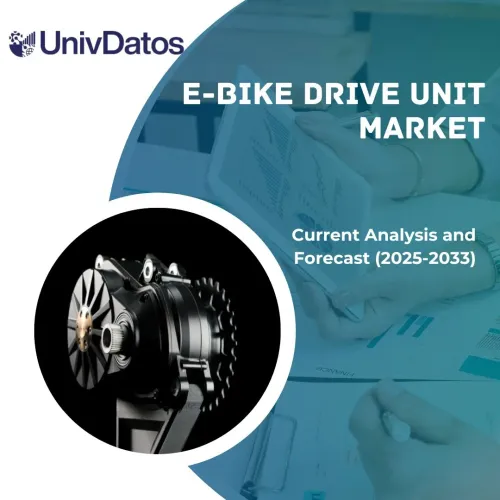- Inicio
- Acerca de nosotros
- Industria
- Servicios
- Leyendo
- Contáctenos
Mercado de buques marinos en MENA: Análisis actual y pronóstico (2024-2032)
Énfasis en Tipo (Buques de Pasajeros, Buques Comerciales, GNL/GLP y Otros); Usuario Final (OEM y Mercado de Repuestos); y País
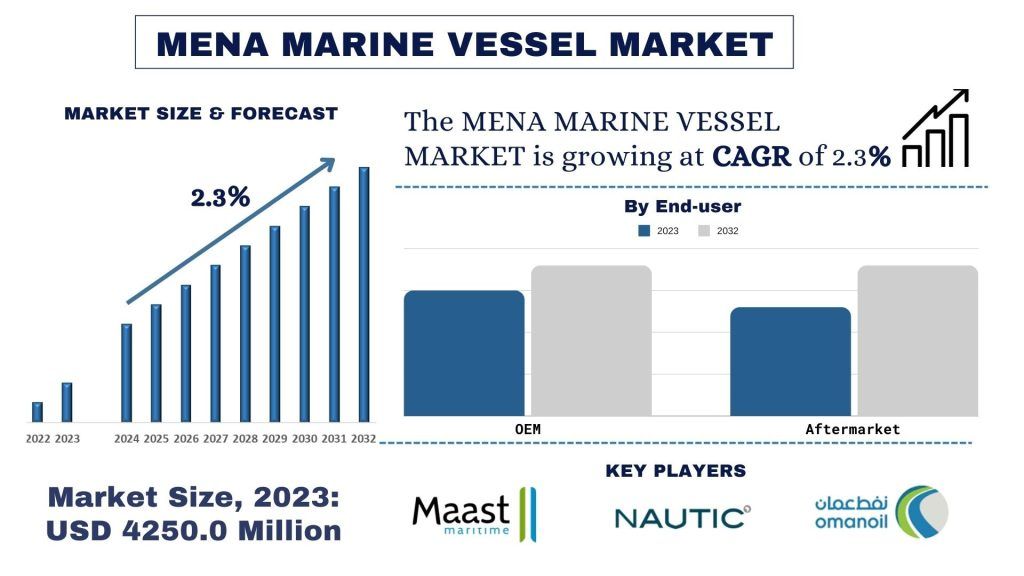
Tamaño del Mercado y Pronóstico de Embarcaciones Marinas
El mercado de embarcaciones marinas de MENA se valoró en USD 4.250,00 millones en 2023 y se espera que crezca a una fuerte CAGR de alrededor del 2,3% durante el período de pronóstico (2024-2032) debido al aumento de las inversiones en los sectores de petróleo y gas y al creciente avance tecnológico.
Análisis del Mercado de Embarcaciones Marinas
Una embarcación marina se refiere a cualquier nave diseñada para la navegación en cuerpos de agua como mares, océanos, lagos o ríos. Estas embarcaciones sirven para diversos fines, incluyendo el transporte de bienes y pasajeros, la pesca, las operaciones en alta mar, las expediciones de investigación y las actividades militares. Vienen en una diversa gama de tipos y tamaños, desde pequeños barcos de pesca y yates de recreo hasta enormes buques de carga, transatlánticos de pasajeros y buques especializados como petroleros, buques de investigación y buques de guerra navales. Cada tipo de embarcación marina está diseñado con características y capacidades específicas para adaptarse a su función prevista y entorno operativo, contribuyendo al vasto e intrincado mundo de las actividades e industrias marítimas.
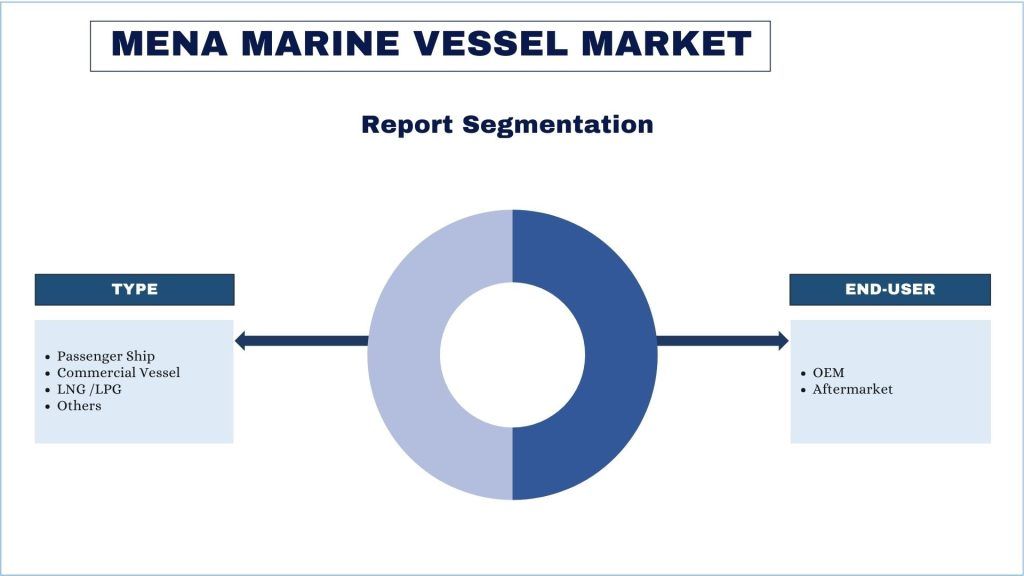
Tendencias del Mercado de Embarcaciones Marinas
Esta sección analiza las principales tendencias del mercado que están influyendo en los diversos segmentos del Mercado de Embarcaciones Marinas, según lo identificado por nuestro equipo de expertos en investigación.
Embarcaciones Comerciales
- Con ubicaciones costeras estratégicas y un sector turístico en crecimiento, países como los EAU, Arabia Saudita, Egipto y Omán están invirtiendo en modernas terminales de cruceros y puertos deportivos para dar cabida a la creciente demanda de viajes marítimos. Los cruceros de lujo, los servicios de ferry y los alquileres de yates están atrayendo a una diversa gama de viajeros que buscan experiencias marítimas únicas y lujosas. A medida que la región continúa desarrollando su infraestructura turística y promoviendo el turismo marítimo, se espera que la adopción de buques de pasajeros continúe creciendo, ofreciendo a los viajeros viajes memorables a lo largo de las pintorescas costas y destinos culturales de MENA. Por ejemplo, según los últimos datos disponibles a partir de mayo de 2023, Oriente Medio fue testigo de un aumento en el número total de plataformas marinas, alcanzando las 236 en comparación con las 193 en mayo de 2022.
Se espera que Arabia Saudita crezca con una CAGR significativa durante el período de pronóstico
Las ambiciones marítimas de Arabia Saudita están estrechamente ligadas a sus esfuerzos de diversificación económica en el marco de la Visión 2030. La extensa costa del reino a lo largo del Mar Rojo y el Golfo Arábigo tiene un inmenso potencial para las actividades marítimas, incluyendo el transporte marítimo, los puertos, la construcción naval, la exploración en alta mar y el turismo marítimo. Iniciativas como la Saudi Maritime Transport Company (Bahri), la Saudi Ports Authority (Mawani) y el King Salman International Complex for Maritime Industries and Services en Ras Al-Khair reflejan el compromiso de Arabia Saudita de desarrollar un ecosistema marítimo robusto. El Proyecto del Mar Rojo, NEOM y el Proyecto del Metro de Riad también contribuyen a aumentar la demanda de embarcaciones marinas para el transporte de bienes, equipos y personal, impulsando el crecimiento del mercado de embarcaciones marinas. Por ejemplo, según la OCDE, Arabia Saudita ha realizado un comercio neto de alrededor de 23.477 millones de dólares estadounidenses en 2022.
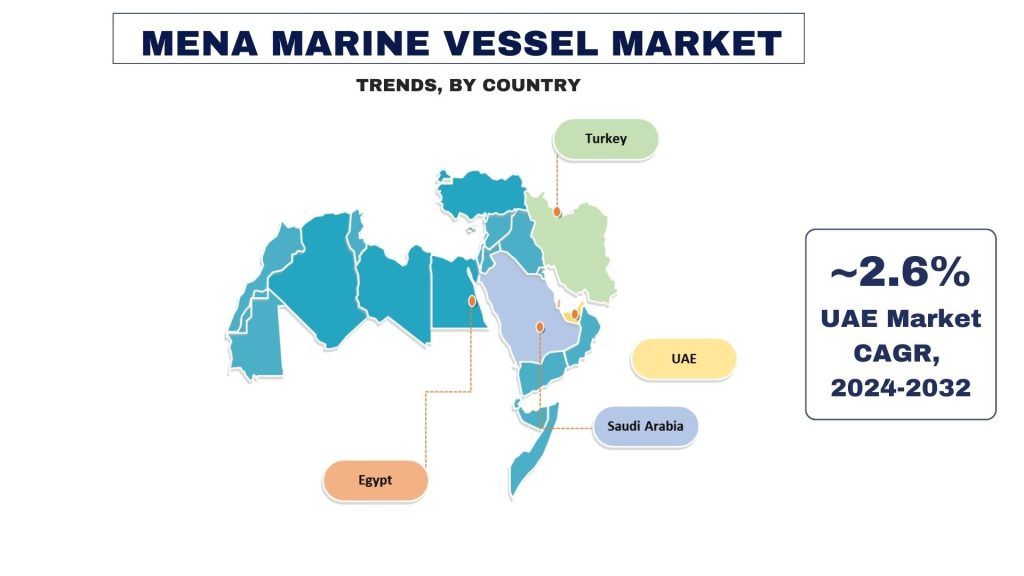
Visión General de la Industria de Embarcaciones Marinas
El mercado de embarcaciones marinas es competitivo y fragmentado, con la presencia de varios actores del mercado de MENA e internacionales. Los actores clave están adoptando diferentes estrategias de crecimiento para mejorar su presencia en el mercado, tales como asociaciones, acuerdos, colaboraciones, lanzamientos de nuevos productos, expansiones geográficas y fusiones y adquisiciones. Algunos de los principales actores que operan en el mercado son Al Masaood, Vmmarine, Al Seer Marine, Rolls-Royce plc, Nautic Africa, Maast Maritime, Israel Shipyards Ltd, Marisol Qatar, ADNOC Drilling Company PJSC y Mitsubishi Heavy Industries Ltd.
Noticias del Mercado de Embarcaciones Marinas
- Según la Organización de Países Exportadores de Petróleo, Arabia Saudita tenía 267.192 millones de barriles de reservas probadas de petróleo en 2022, un aumento del 0,35% en comparación con 2017.
- Por ejemplo, en diciembre de 2022, el Fondo de Inversión Pública (PIF) de Arabia Saudita adquirió una participación del 9,5% en Skyborn Renewables, un destacado actor en el sector eólico marino. Se prevé que esta inversión permita al PIF participar activamente en el avance mundial de la transición energética y la energía limpia.
Cobertura del Informe del Mercado de Embarcaciones Marinas de MENA
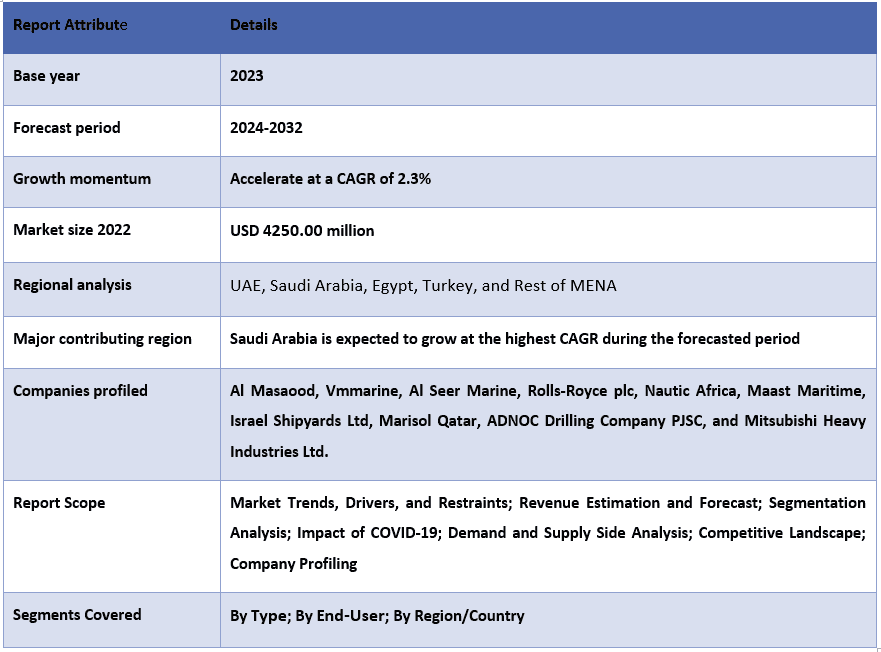
Razones para comprar este informe:
- El estudio incluye análisis de tamaño del mercado y pronósticos validados por expertos clave autenticados de la industria.
- El informe presenta una revisión rápida del rendimiento general de la industria de un vistazo.
- El informe cubre un análisis en profundidad de los pares prominentes de la industria con un enfoque principal en las finanzas clave del negocio, las carteras de productos, las estrategias de expansión y los desarrollos recientes.
- Examen detallado de los impulsores, las restricciones, las tendencias clave y las oportunidades que prevalecen en la industria.
- El estudio cubre exhaustivamente el mercado en diferentes segmentos.
- Análisis profundo a nivel regional de la industria.
Opciones de personalización:
El mercado de embarcaciones marinas de MENA se puede personalizar aún más según el requisito o cualquier otro segmento de mercado. Además de esto, UMI entiende que usted puede tener sus propias necesidades de negocio, por lo tanto, no dude en ponerse en contacto con nosotros para obtener un informe que se adapte completamente a sus necesidades.
Tabla de contenido
Metodología de Investigación para el Análisis del Mercado de Buques Marinos (2024-2032)
El análisis del mercado histórico, la estimación del mercado actual y la previsión del mercado futuro del mercado de buques marinos de MENA fueron los tres pasos principales que se llevaron a cabo para crear y analizar la adopción de buques marinos en las principales regiones de MENA. Se llevó a cabo una exhaustiva investigación secundaria para recopilar las cifras históricas del mercado y estimar el tamaño del mercado actual. En segundo lugar, para validar estas perspectivas, se tomaron en consideración numerosos hallazgos y supuestos. Además, también se realizaron exhaustivas entrevistas primarias con expertos de la industria en toda la cadena de valor del mercado de buques marinos de MENA. Tras la suposición y la validación de las cifras del mercado a través de entrevistas primarias, empleamos un enfoque de arriba hacia abajo/de abajo hacia arriba para pronosticar el tamaño completo del mercado. Posteriormente, se adoptaron métodos de desglose del mercado y de triangulación de datos para estimar y analizar el tamaño del mercado de los segmentos y subsegmentos de la industria en cuestión. La metodología detallada se explica a continuación:
Análisis del Tamaño Histórico del Mercado
Paso 1: Estudio en Profundidad de Fuentes Secundarias:
Se realizó un estudio secundario detallado para obtener el tamaño histórico del mercado de buques marinos a través de fuentes internas de la empresa, como informes anuales y estados financieros, presentaciones de rendimiento, comunicados de prensa, etc., y fuentes externas, incluyendo revistas, noticias y artículos, publicaciones gubernamentales, publicaciones de la competencia, informes del sector, bases de datos de terceros y otras publicaciones creíbles.
Paso 2: Segmentación del Mercado:
Después de obtener el tamaño histórico del mercado de buques marinos, realizamos un análisis secundario detallado para recopilar información histórica del mercado y compartirla para diferentes segmentos y subsegmentos para las principales regiones. Los principales segmentos incluidos en el informe son el tipo y el usuario final. Además, se llevaron a cabo análisis a nivel de país para evaluar la adopción general de modelos de prueba en esa región.
Paso 3: Análisis de Factores:
Después de adquirir el tamaño histórico del mercado de diferentes segmentos y subsegmentos, realizamos un análisis de factores detallado para estimar el tamaño actual del mercado de buques marinos. Además, realizamos un análisis de factores utilizando variables dependientes e independientes, como el tipo y el usuario final del mercado de buques marinos. Se llevó a cabo un análisis exhaustivo de los escenarios de demanda y oferta, teniendo en cuenta las principales asociaciones, fusiones y adquisiciones, la expansión empresarial y los lanzamientos de productos en el sector del mercado de buques marinos en todo el mundo.
Estimación y Previsión del Tamaño Actual del Mercado
Tamaño Actual del Mercado: Basándonos en la información práctica obtenida de los 3 pasos anteriores, llegamos al tamaño actual del mercado, los principales actores del mercado de buques marinos de MENA y las cuotas de mercado de los segmentos. Todas las divisiones de cuotas porcentuales requeridas y los desgloses del mercado se determinaron utilizando el enfoque secundario mencionado anteriormente y se verificaron a través de entrevistas primarias.
Estimación y Previsión: Para la estimación y previsión del mercado, se asignaron ponderaciones a diferentes factores, incluyendo los impulsores y las tendencias, las restricciones y las oportunidades disponibles para las partes interesadas. Después de analizar estos factores, se aplicaron las técnicas de previsión pertinentes, es decir, el enfoque de arriba hacia abajo/de abajo hacia arriba, para llegar a la previsión del mercado para 2030 para diferentes segmentos y subsegmentos en los principales mercados de MENA. La metodología de investigación adoptada para estimar el tamaño del mercado abarca:
- El tamaño del mercado de la industria, en términos de ingresos (USD) y la tasa de adopción del mercado de buques marinos en los principales mercados a nivel nacional.
- Todas las cuotas porcentuales, divisiones y desgloses de los segmentos y subsegmentos del mercado.
- Los principales actores del mercado de buques marinos de MENA en términos de productos ofrecidos. Además, las estrategias de crecimiento adoptadas por estos actores para competir en el mercado de rápido crecimiento.
Validación del Tamaño y la Cuota del Mercado
Investigación Primaria: Se realizaron entrevistas en profundidad con los Líderes de Opinión Clave (KOLs), incluyendo a los Ejecutivos de Alto Nivel (CXO/VPs, Jefe de Ventas, Jefe de Marketing, Jefe de Operaciones, Jefe Regional, Jefe de País, etc.) en las principales regiones. Los hallazgos de la investigación primaria se resumieron y se realizó un análisis estadístico para probar la hipótesis planteada. Las aportaciones de la investigación primaria se consolidaron con los hallazgos secundarios, convirtiendo así la información en conocimientos prácticos.
División de los Participantes Primarios en Diferentes Regiones
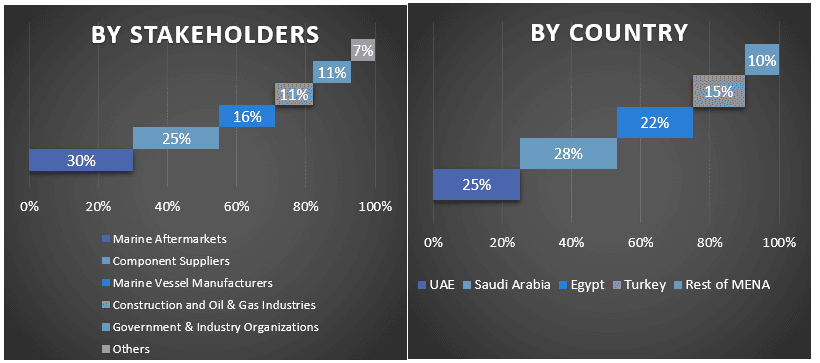
Ingeniería de Mercado
Se empleó la técnica de triangulación de datos para completar la estimación general del mercado y para llegar a cifras estadísticas precisas para cada segmento y subsegmento del mercado de buques marinos de MENA. Los datos se dividieron en varios segmentos y subsegmentos después de estudiar varios parámetros y tendencias en las áreas del tipo y el usuario final en el mercado de buques marinos de MENA.
El principal objetivo del estudio del mercado de buques marinos de MENA
Las tendencias actuales y futuras del mercado de buques marinos de MENA se identificaron en el estudio. Los inversores pueden obtener información estratégica para basar su discreción en las inversiones en el análisis cualitativo y cuantitativo realizado en el estudio. Las tendencias actuales y futuras del mercado determinaron el atractivo general del mercado a nivel regional, proporcionando una plataforma para que el participante industrial explote el mercado sin explotar para beneficiarse de una ventaja de ser el primero en actuar. Otros objetivos cuantitativos de los estudios incluyen:
- Analizar el tamaño actual y previsto del mercado de buques marinos en términos de valor (USD). Además, analizar el tamaño actual y previsto del mercado de diferentes segmentos y subsegmentos.
- Los segmentos del estudio incluyen áreas del tipo y el usuario final.
- Definir y analizar el marco regulatorio para el buque marino.
- Analizar la cadena de valor involucrada con la presencia de varios intermediarios, junto con el análisis de los comportamientos de los clientes y la competencia de la industria.
- Analizar el tamaño actual y previsto del mercado de buques marinos para la región principal.
- Los principales países de las regiones estudiadas en el informe incluyen EAU, Arabia Saudí, Egipto, Turquía y el resto de MENA.
- Perfiles de empresas del mercado de buques marinos y las estrategias de crecimiento adoptadas por los actores del mercado para mantenerse en el mercado de rápido crecimiento.
- Análisis regional en profundidad de la industria.
Preguntas frecuentes Preguntas frecuentes
P1: ¿Cuál es el tamaño actual del mercado y el potencial de crecimiento del mercado de embarcaciones marinas?
P2: ¿Cuáles son los factores impulsores del crecimiento del mercado de embarcaciones marinas?
P3: ¿Qué segmento tiene la mayor cuota del mercado de embarcaciones marinas por usuario final?
P4: ¿Qué región dominará el mercado de embarcaciones marinas?
Relacionados Informes
Los clientes que compraron este artículo también compraron







